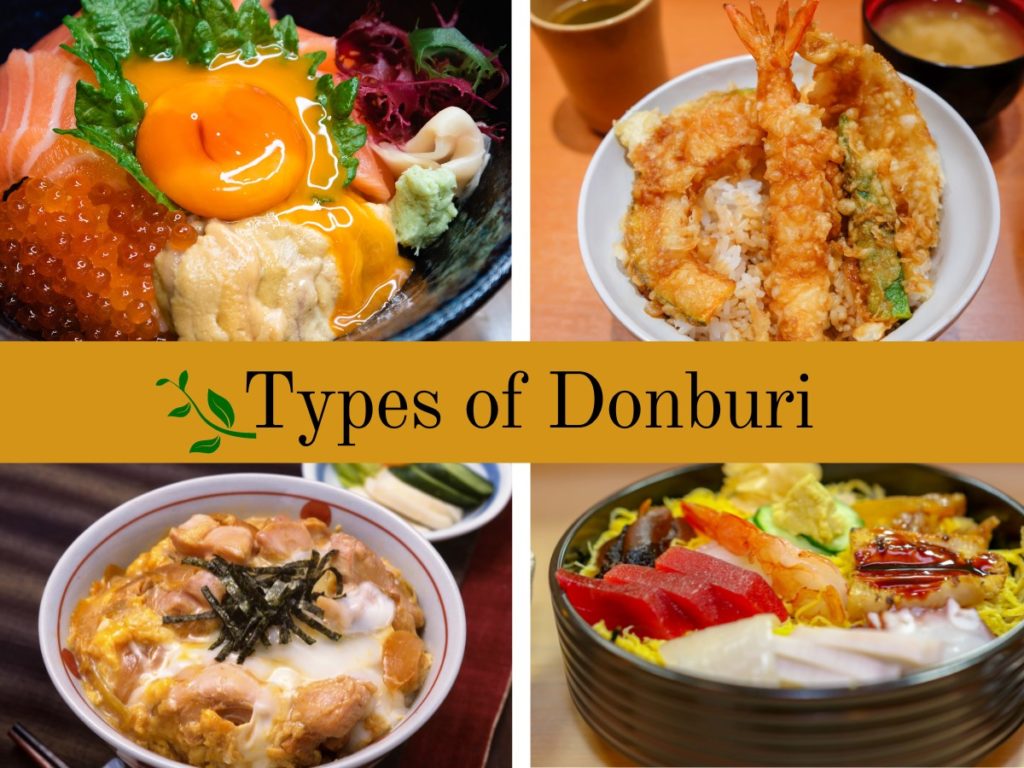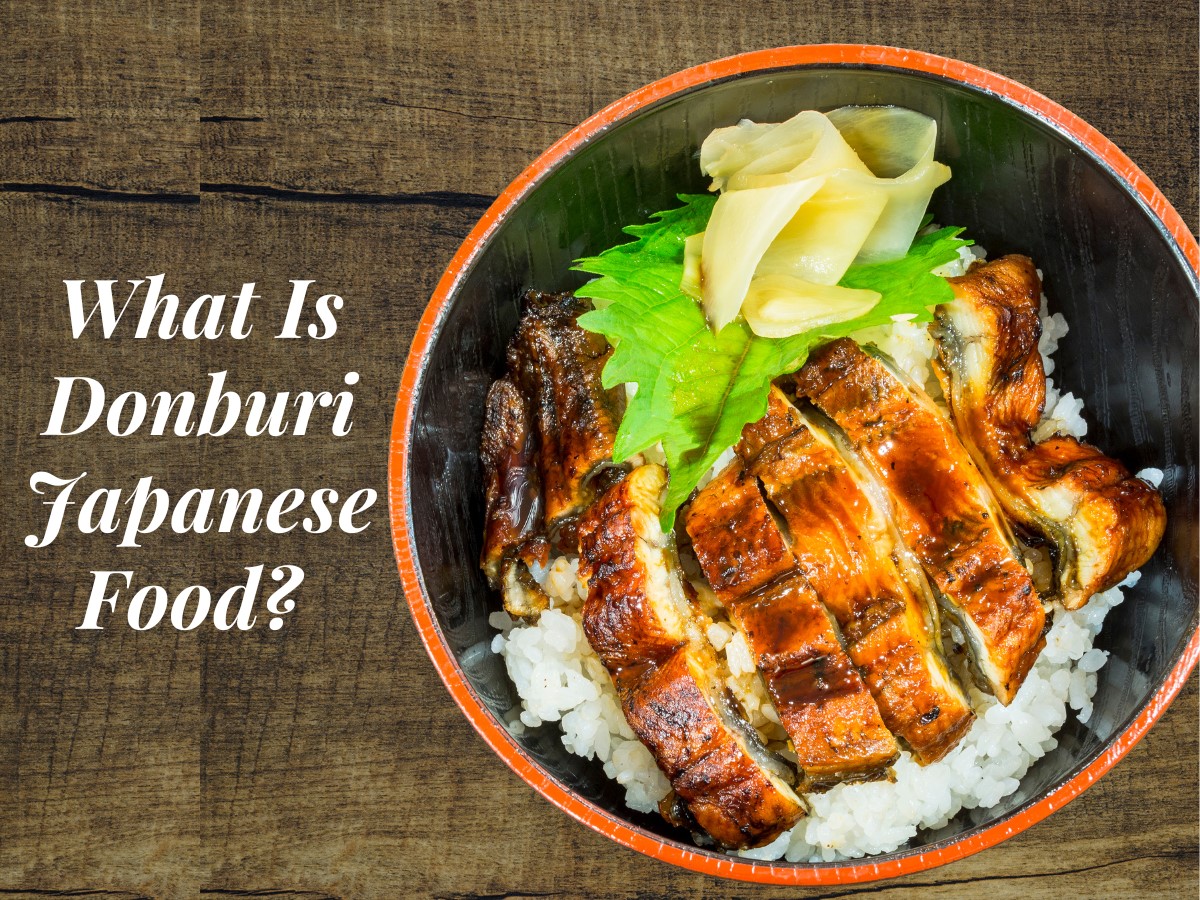Rice is the staple of Japanese cuisine. You may find short-grain white rice called Japonica rice in several Japanese recipes. Nevertheless, each recipe calls for a particular variety of rice to dictate authenticity. Donburi is one of the most delectable Japanese dishes that use short-grain rice. Anyway, some people also use medium-grain rice. It’s a traditional Japanese meal with various meat, seafood, eggs, and vegetables. Indeed, it’s a perfect bowl of comfort food enriched in nutrients.
In Japan, donburi is readily available at almost every restaurant at quite an affordable price. The few Japanese eateries have branches in LA and NYC, where you can enjoy authentic donburi recipes and tastes. Want to know more about Japan’s special meal? Here’s a brief description of “What is Donburi Japanese food,” types of donburi, and FAQs.
What Is Donburi Japanese Food?
Donburi, in Japanese, refers to a large bowl. It is a traditional Japanese food comprising a bowl of rice savored with various meat, such as chicken, beef, pork, tempura, fish, salmon roe, and eel. Moreover, several donburi recipes include vegetables like onions, tomatoes, green onions, cilantro, chives, broccoli, carrot, and sweetcorn.
This Japanese meal often includes poached or fried eggs for a healthy and warming breakfast. Assorted condiments, seasonings, and sauces also complement the added ingredients. Though famous as fast food luncheon in Japan, you can have it for breakfast, lunch, or supper, served either warm or cold. Furthermore, you can alter the calorie intake and nutritious value of donburi Japanese food by varying the ingredients.

Types of Donburi
There are several types of donburi recipes depending on the ingredients used. Each donburi recipe ends with a suffix, “don.” Here are some of the admired traditional donburi meals:
Butadon
Butadon, also known as pork donburi, is a famous Japanese meal that originated in Hokkaido during the mad cow scare. It is a delectable recipe comprising steamed short-grain rice topped with caramelized pork loin slices. Moreover, the tare sauce seasons and brings out the recipe’s flavors- thanks to the distinctive savoriness of soy sauce, sugar, and sake.
Chukadon
Chukadon is also known as the “Chinese-style rice bowl.” The recipe includes short-grain rice stir-fried in a wok, drizzled with a soy-based sauce, and topped with various kinds of meat, seafood, and vegetables like cabbage and bamboo shoots. Some people love adding shiitake and wood-ear mushrooms to the meal.
Gyudon
Gyudon- the beef rice bowl comprises steamed rice with beef slices, caramelized onions, ginger, daikon radish, and kimchi. A traditional Japanese dashi-based sauce with mirin, soy sauce, sugar, and sake complements the sweetness and savoriness of the meal.
Ikuradon
Ikuradon is a bowl of steamed rice with glossy and buttery salmon roe. It is an easy recipe in which you can add soy-based sauce and garnish it with seaweed strips and shiso leaf.
Katsudon
Katsudon is a donburi recipe comprising steamed short-grain rice topped with deep-fried pork cutlet simmered in a soy and sake sauce. The cutlet is mixed with scrambled eggs before pouring the hot and heavy gravy on the rice. Moreover, the caramelization of onion in dashi soup stock adds to the savoriness of this meal.
Kaisendon
Kaisendon, also known as seafood donburi, is a famous dish of Nothern Japan (Hokkaido). The recipe includes hot steamed rice covered with fresh and raw seafood, for example, tuna, salmon, salmon roe, uni (sea urchin), crab meat, shrimp, and scallops. Besides the fleshy protein, kaisendon includes fresh and sweet vegetables like cucumber, shiso leaves, and scallions. Moreover, some people add nori seaweed to the umami flavor.
Oyakodon
Oyakodonin Japanese stands for parent and child bowl. This classic Japanese meal includes chicken (parent) and egg (child) simmered in a savory and nutritious broth made with dashi, mirin, soy sauce, and sugar. The broth with chicken and egg on top of the steaming hot rice is the best comfort food in Japan. Other garnishings include scallions, herbs, cilantro, and shichimi pepper spice.
Sosu Katsu don
Sosu katsu don is similar to katsu don, but besides simmering the fried pork cutlet in a broth, this recipe favors adding the cutlet to a thick Worcestershire sauce. In short sauce with katsu don to add a hint of sweetness and umami flavor to the salty pork cutlet.
Tekkadon
“Raw tuna sashimi donburi” is another traditional Japanese recipe comprising raw and spicy tuna slices draped on steamed rice. The tuna seasoned with a zesty and hot orange sauce makes the meal appetizing and delectable.
Tendon
Tendon is a tempura donburi recipe with a perfectly deep-fried tempura/shrimp coated in a light batter. The crispy hot tempura draped on the steaming rice and garnished with Japanese condiments is a perfect winter meal.
Unadon
“Grilled Eel rice bowl” features steaming hot rice topped with caramelizing grilled eel slices on a charcoal fire and seasoned with a special tare sauce. This cooking method of unadon is known as Kabayaki.
FAQs
What Does Donburi Mean in English?
Don means bowl in Japanese. A traditional Japanese meal, donburi, is a bowl of steamed rice topped with meat, fish, veggies, eggs, and sauces. There are several types of donburi based on the kind of meat and added condiments, for example, oyakodon, katsu don, gyudon, and tendon.
Does Donburi Have Eggs?
Donburi can have eggs that are ideal for breakfast or lunch. Tomago don is a donburi recipe that contains a bowl of short-grain rice topped with an egg cooked in dashi. Nevertheless, you can add poached or fried eggs to any donburi rice you like.
Can You Eat Donburi With Spoons or Chopsticks?
Though the Japanese prefer consuming their meals with chopsticks, specific recipes require a spoon. Donburi is among the few Japanese foods that people eat with tablespoons.
How to Serve Donburi? Warm or Cold
You can serve donburi either warm or cold. Nevertheless, some people prefer consuming it hot so the rice won’t become mushy. If the recipe contains delicate or raw seafood, you should serve it at a cool temperature, with rice a bit warm enough.

